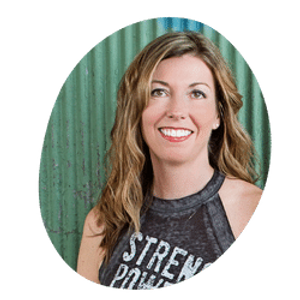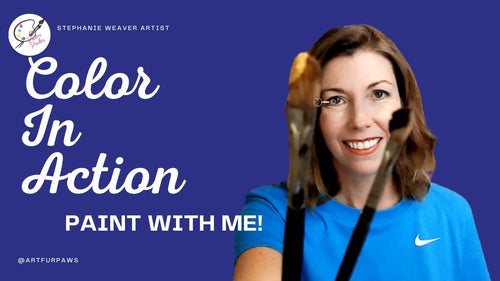When it comes to oil painting, one of the most important tools you will use is your palette. It is important to choose the right palette for you to get the most out of your painting experience. In this article, I'm going to share with you the best palettes and the things to keep in mind when choosing an oil painting palette. As an FYI, from my experience, if you pick the wrong one you are pretty much stuck with it and will end up buying another. So in this article, you are going to learn:
1) 3 Key Questions to ask before you purchase a palette.
2) The types of palettes available.
3) How to clean a palette.
4) How to store paint in between paint sessions.
5) My top 5 palettes that I love, why, and why I would use one over the other.
Please note: I am an affiliate with Amazon and Blick Art materials which means I may receive commissions when you click my links and make purchases. However, this does not impact my reviews and comparisons. I only advocate products I believe in.
Let's get started!
3 Key Questions to Ask BEFORE you purchase a Palette.
Before you purchase any oil painting palette, you should ask yourself a few key questions.
- What type of painter do you want to be: one who paints more inside or outside?
- Do you plan to use a lot of paint or a minimalist palette?
- Do you typically tone your canvas?
Let's break down each.
Do you want to paint more inside or outside?
The answer to this question will drive you toward whether you should invest in a Pochade box or not. If you would prefer to paint outside, then you'd want to invest in a pochade box. A pochade (from French word poche, pocket) is a type of painting sketch usually done outdoors (‘en plein air’.) Artists use a pochade to capture outdoor scenes in real-life situations and to capture the atmosphere and feeling of a scene. A pochade box is a box for supporting and carrying a pochade (the painting sketch) .
What is the best Pochade Box
The best pochade box would generally have the following characteristics:
- Lightweight
- Mobile friendly
- Hold enough paint for the day’s painting
- Has a large enough palette based on how you paint (limited or full palette, lots of paint or a little paint) with plenty of mixing space
5 Factors to Consider when selecting a pochade box or plein air easel
There are five factors you need to consider when choosing a pochade box or easel system.
- Your height: To be able to draw accurately, you should have your canvas or painting panel at about eye level. If it is too low you will have problems with your drawing subjects where perspective is important like cityscapes. Some easel systems will not work for tall people because the maximum height to which you can raise the panel is too low. In this case, you'll want to consider a system where you can choose a tripod that will work with your height.
- Your Strength: If you are strong and used to carrying weights, then you can trade off a little weight for other features. In the article where I discuss Plein air painting "The Essentials for Plein Air Painting: A Beginners Guide", you can see that carrying all your supplies for a day of painting can quickly add up to 20 pounds, so the weight of the pochade box is definitely a factor you'll want to consider.
- Palette size: If you plan to bring a lot of different paint colors, then you'll want to get a pochade box with a larger size palette. However, if you decide to paint with fewer colors like the limited palette called the Zorn Palette, then a smaller pochade box with a smaller mixing area will work well.
- Arm comfort (high/low): With some (if not all) pochade boxes you need to have the palette quite high, almost as high as your painting panel. If you paint standing up (which is the recommended way of painting plein air if you are able), your arm will get tired after a while (mine usually hurts right where the shoulder blade). Or you end up putting your painting below eye level which can cause drawing problems and your neck may start to hurt because you'll be looking down. (Check out this article "10 Habits to Foster Creativity" which discusses stretches for your neck and shoulders). Other systems allow for a long distance between the palette and your canvas of painting panel. This allows for a more natural painting position in which your arm is lower.
- Canvas size: Some people like to paint very large outdoors. If this is the case you need to choose an easel system that will accommodate large canvases.
If painting outdoors is your desired method of painting, check out the article "The Essentials for Plein Air Painting: A Beginners Guide" for pochade box recommendations, additional supply considerations, and more.
If you decide to paint indoors, read on for additional considerations.
Types of Palettes
The usual choice of palette for laying out your oil paints and mixing the colors is either a plastic palette, a traditional wooden palette, a glass palette, or a pad of disposable palette or paper palette.
Plastic Palette
Plastic palettes come in a variety of offerings:
- Clear palette. The clear acrylic palette is good for holding up to the canvas and seeing through it to better judge your colors mixes against the painting.
- White palette. The advantage of a white palette is that it allows artists to see what the color will look like on a white canvas.
- Neutral gray palette. This was a recent discovery for me, New Wave came out with the "New Wave Avant-Garged Grand View Confidant Palette." What I love about this palette is how it tucks in at the arm and at the waist, it also has a comfortable thumb hole and allows for the fingers to come through for an easy grip. (I don't get hand cramps with this type of handheld palette)
Wood Palettes
Wood palettes are typically what artists are thought to hold. They can be kidney-shaped or rectangular with a thumbhole cut out to make it easier to hold. If you use a burnt sienna-toned canvas it might be better to use a wooden palette as the brown will allow you to see how your colors will appear on the burnt sienna-toned canvas.
When you pick a wooden palette, they often come as a raw wood palette, which means they'll soak up the linseed oil from the paints. As a result, you will need to condition the palette to make it less absorbent of the oil paint. The way to do this is:
- Lightly sand the wood to give it a fresh, clean smooth surface.
- Apply a light layer of linseed oil and rub it into the wood with a paper towel or rag, Add a little at a time until each bit is absorbed
- Allow the palette to dry for a day.
- Repeat steps 2 and 3. Keep doing layers of this until no more oil will absorb.
Glass Palettes
Glass palettes are a favorite for keeping on an artist's table. They are made from tempered safety glass with smooth edges and come in various sizes (You can even have an entire table with a glass top!). As you would imagine there are clear glass palettes, but in recent years New Wave came out with the New Wave Glass Palette in Neutral Gray. This is my favorite desktop palette that is on the market today.
When I first started painting I had a piece of glass cut at my local hardware store, it worked well but I had to be aware of the sharp edges, so it rarely came out of the Masterson's palette box. I have this setup still today (I'll explain why below). In the past, I also made a glass palette by taking a picture frame with a gray piece of paper placed under the glass - this setup is no longer in use but served the purpose until I found the New Wave Glass Palette in Neutral Gray..
Palette Paper
Paper palettes are handy for clean up, when you are done simply rip it and trash it. I have one of these in my teaching palette so that I can quickly move between demonstrations and colors without scraping and wiping.
Handheld or Desktop: Choose Based on Your Painting Style
Handheld. Virtually every option is available for a handheld for the types of palettes, all you have to do is choose between lefty or righty.
Desktop. If you plan to sit a lot, then a desktop/tabletop palette is a good choice. Virtually every type of palette is also available in a tabletop version. When selecting a desktop palette consider the size you'd like, the base tone (grey, brown, white) and the material you'd prefer (plastic, glass, wood, paper)
Consider the Size of the Palette
Pallets come in different sizes and you can even have palettes custom-made to fit your table. When you select the size it will depend on a couple of factors:
1) How many paint colors do you use?
2) How much paint do you use at one time?
3) How much space do you have?
For example, if you have a limited palette and you don't use a lot of paint to create a great deal of texture then you will likely need very little space for the paint, however, your primary concern is having enough space to mix your paint colors. As a result, a smaller palette would be ideal, as long as there is enough room for you to mix your paint.
On the other hand, if you use large amounts of paint then you'll want a larger palette that can accommodate large dollops of paint and have a large mixing area.
My recommendation, get the largest palette you can for the space that you have UNLESS you plan to paint outdoors, in which case, weight becomes the driving factor.
How To Clean A Palette
A dirty palette can be a pain to clean, but it's important to do so in order to keep your paints from mixing together and ruining your work. So the next time your palette starts looking grungy, follow these steps for the palette type that you have!
Clear or plastic palette clean up
A clear palette clean-up requires you to be more fastidious in cleaning your palette - ideally, you don't want the paint to dry on the palette because you'll want to avoid using a razor scraper tool that can scar the surface. So in order to preserve the clear plastic palette for future oil painting sessions, you'll need a Palette knife and a solvent like Gamsol.
- To clean your palette, scrape all of the paint with your palette knife first. Tip, you can set the leftover paint aside to mix together to make a neutral gray that can be used to tone canvases.
- Wipe the palette clean with a paper towel dipped in Gamsol. Repeat as needed.
Glass palette clean up
A glass surface is the easiest to clean off for oil painters. You'll need a Palette knife, Razor Scraper tool like this, and a solvent like Gamsol.
- To clean your palette, scrape all of the paint with your palette knife first.
- To remove excess dried paint, use the Razon Scraper tool to scrape up the paint. Put the dried paint on an old piece of paper, paper towel to be disposed of. Tip: be sure to push the razor away from you.
- Wipe the palette clean with a paper towel dipped in Gamsol. Repeat as needed.
Wooden palette clean up
Oil paints will stain a wood palette if left on it too long. It's best to squeeze out only the amount of paint you need during a session, but that's not entirely realistic.
- To clean your palette, scrape all of the paint off with your palette knife.
- To remove excess residue, apply a light coat of a solvent like Gamsol and allow this to sit for five minutes or so.
- Wipe the palette clean with a paper towel. Repeat these two steps if needed.
- Once the palette is clean, dampen a paper towel with linseed oil, rub it into the wood, and allow the palette to dry.
So, whether your palette is made of wood, glass or plastic, remember to keep it clean! It may take a little extra time and effort at the beginning, but it will be worth it in the end when you have perfectly mixed colors and beautiful paintings.
How to Store Paint on the Palette Between Paint Sessions
As an artist, you know that the process of creating a work of art is never finished. There are always tweaks and changes that can be made to improve the piece. The colors on your palette can change dramatically from one session to the next, so it's important to store them in a way that will keep them as consistent as possible. Here are a few tips on how to do just that!:
- Put the whole palette in the freezer.
- If freezer space is limited, add a cotton ball with a few drops of clove oil on the palette and cover the palette
The storage options allow you to easily grab your palette the next day to start painting quickly. Storing your paint in between painting sessions does 2 things for you will:
- Save money, because you won't waste paint,
- Save time as you won't have to reset your palette between each painting session.
My favorite method? - I do them all. As you'll see shortly, I have 5 palettes, each with a different purpose.
Why do I have 5 Palettes?
I've been painting for 20 years and every palette I've used, I have kept and each serves its own purpose. Here is a listing of what I do and why.
-
Masterson's Palette box with Palette Paper. This palette I use for teaching and demo purposes. The reason I use it for this purpose is
a. I know that the demo or class will be short (2 hours to a 5-day workshop). So I likely won't use the color mixes for other paintings.
b. I teach my students to keep a clean mixing area on their glass palettes so they can keep their paint colors as intended. This is more easily demonstrated by moving paint mixes and paint colors to a new sheet. -
Masterson's Palette box with Glass. This palette I use for longer teaching exercises or for another painting that requires a different paint palette color setup than my standard palette.
a. It is easy to scrape the paint with the Razor scrape tool.
b. Stores easily in the freezer with a lid.
c. Travels easily with the lid. -
New Wave Glass Palette in Neutral Gray. This is my favorite for my home studio. I have the 16x20" palette and it will fit on the bottom shelf of our freezer. Before I found this palette, I made my own using a 16x20" frame with a glass insert, and I added a gray neutral-toned piece of paper under the glass.
a. It is easy to scrape the paint with the Razor scrape tool.
b. Has a larger mixing area than the Masterson's Palette boxes
c. Stores easily in the freezer (it has a shelf all its own) - New Wave Avant-Garged Grand View Confidant Palette. This is a fun palette to have on hand when I want to be more free-flowing with what I'm painting, or I move around a lot more. Plus it just makes me feel more like an artist - I know that sounds weird - but there is just something about the movement that is allowed when you have the palette in your hand.
- Sienna Pochade Box. This palette is reserved for plein air painting.
- New Wave POSH Table Top Wooden Artist Palette | Neutral Grey. Great for travel or a tabletop painting setup. Add a little phone pop socket or this phone strap to the back for easy holding.
- ADD THIS TO THE BACK
Want more information about Oil Painting Supplies, click here to download "The Ultimate Guide To Oil Painting Supplies"
Other FAQs for Oil Painting Palettes
Do you need a glass palette for oil painting?
Answer: do you NEED it no, do I recommend it, yes.
Can I use plastic palettes for oil paints?
Answer: yes, however, you will need to be diligent about cleaning it after each session as it is not recommended to use a Razon scraper tool as it will scratch the surface. Plastic palettes are generally best for watercolor, acrylic or gouache - or other water-based paints.
Is a wooden palette good for oil paint?
Answer: is it good, as long as it is conditioned well, it will be a life-long friend. If you do pick a wood handheld palette, I recommend the New Wave Grand View Confidant Hand Held Wood Artist Palette because it works better with your hand to help prevent hand cramps.
Conclusion
The best oil painting palette for you is based on your personal preference. Consider the different types of palettes available and what each has to offer, then decide which is right for you.
Pin It For Later









































